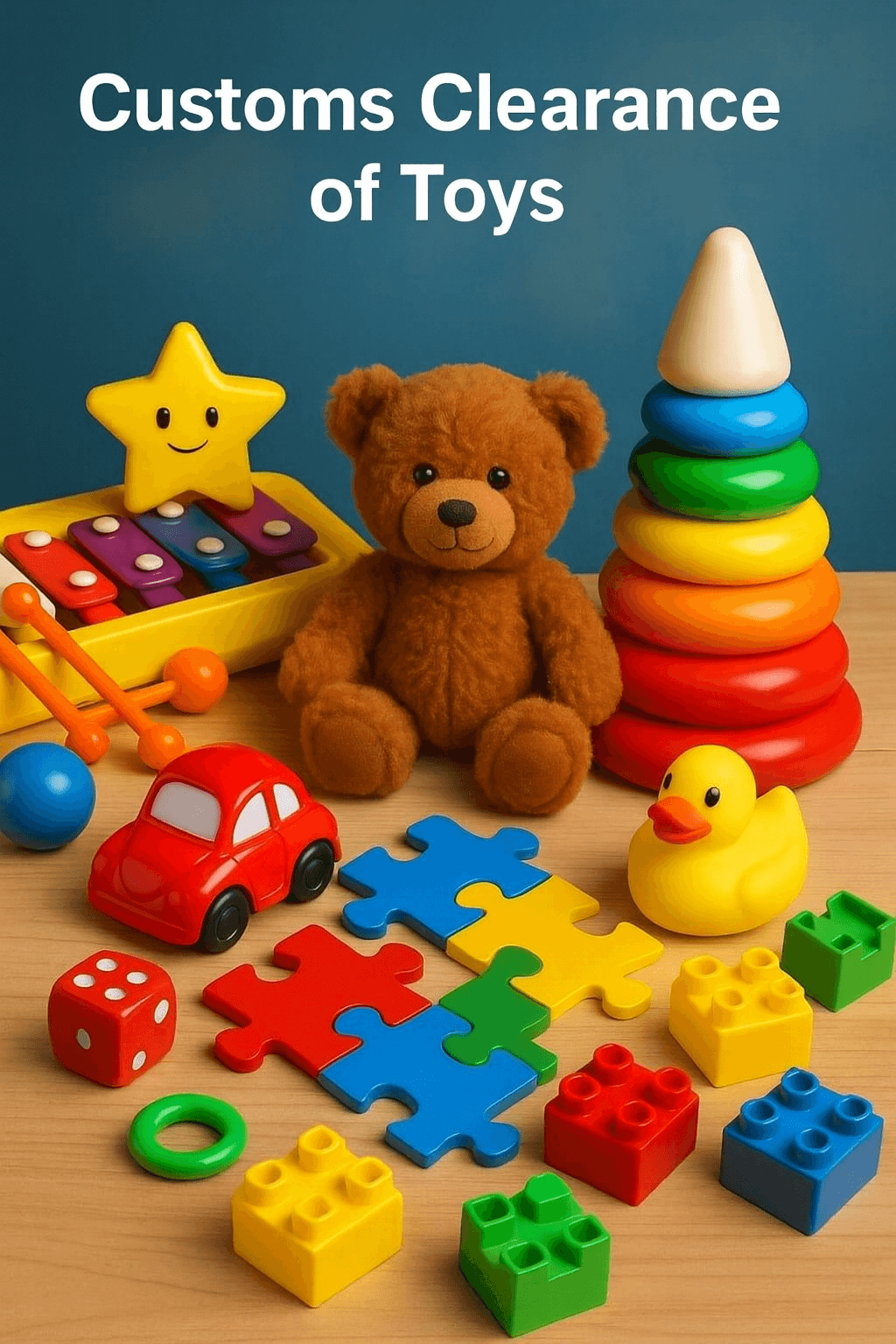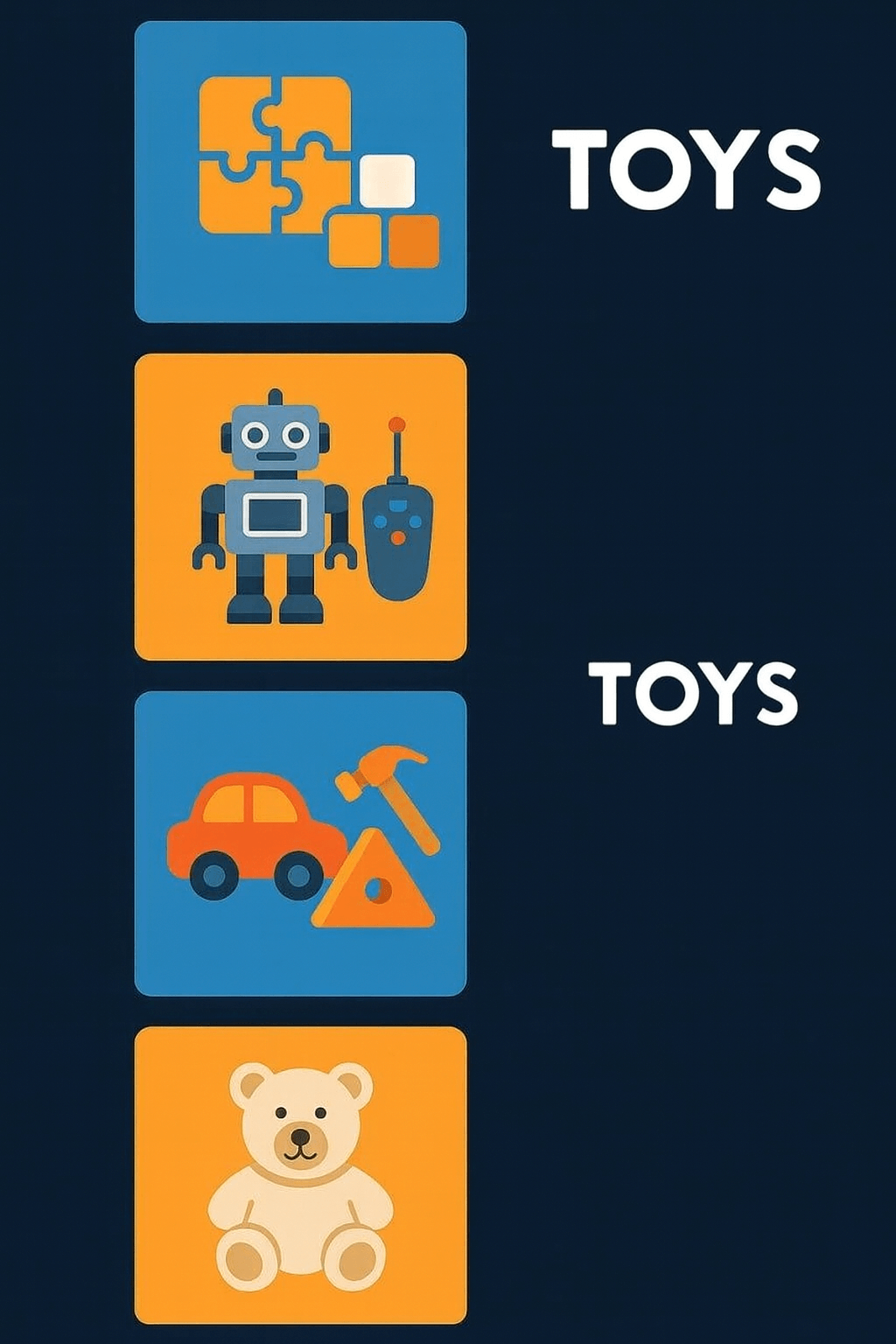Customs Clearance of Toys in Iran (HS 9503 + Standards & Documents)

For an estimate of time and cost to clear toys (electronic/plastic/wooden/soft), contact Saba Tarkhis experts.
Instant free consultation1) Types of Toys & Their Specialized Categories
Educational Toys:
Electronic Toys:
Plastic and Wooden Toys:
Soft Toys:
2) Safety & Hygiene Standards in Toy Imports
3) Customs Tariff (HS Code) for Toys
Toys are generally classified under 9503. This heading covers traditional and modern toys, dolls, board games, and similar products. Accurate classification helps importers benefit from appropriate tariffs and avoid customs issues.
The HS Code for electronic toys is usually within subgroup 9503. For example, electronic robots may fall under 9503.00.80.
The HS Code for plastic and wooden toys typically falls under 9503.00.90. Plastic toys are often in 9503.00.30, while wooden toys may be under 9503.00.60.
| Product Group | Short Description | HS Code |
|---|---|---|
| Toys (general) | Dolls/games/similar items | 9503 |
| Electronic toys | Robots/RC/smart | 9503.00.80 |
| Plastic toys | Cars/figures/blocks | 9503.00.30 |
| Wooden toys | Puzzles/blocks/educational | 9503.00.60 |
| Other (misc. plastic/wood) | Miscellaneous items | 9503.00.90 |
Exact subheading depends on material, user age, presence of electronics/batteries, and educational use.
4) Major Toy Exporters & Importers
Iran is one of the largest toy importers in the Middle East, sourcing mainly from Asian countries. Thanks to suitable quality and competitive prices, these toys have a significant market in Iran.
Conversely, Iran’s toy exports are limited and mostly directed to neighboring countries such as Iraq, Afghanistan, and other Persian Gulf states. Geographic proximity and strong demand for quality, competitively priced goods make Iran a key supplier in these markets.
5) Specific Conditions & Challenges in Toy Imports
6) Documents Required to Clear Toys from Customs
1. Commercial Invoice
Description: Issued by the seller/exporter and includes detailed purchase information: unit price, quantities, item descriptions, payment terms, and total amount. It’s the primary basis for customs valuation and duty calculation. Any discrepancy can trigger valuation disputes.
Importance: Accuracy directly affects customs calculations, taxes, and duties. The invoice may also be required for other permits and banking procedures.
2. Certificate of Origin
Description: Identifies the producing country and is endorsed by competent authorities in the origin country, typically the chamber of commerce. It can determine eligibility for preferential tariffs under trade agreements.
Importance: Precise origin affects duty rates. Goods from countries with preferences may receive reduced or exempt tariffs. Missing/incorrect CO may lead to higher duties or customs issues.
3. Bill of Lading
Description: A transport document issued by the carrier acting as a contract between shipper and carrier. It includes shipper/consignee, goods description, package count/weight, final destination, and carriage terms. It may be an ocean B/L or an air waybill.
Importance: A key document for identification and comparison with other papers; also serves as the title to goods. Without it, the consignee cannot take delivery.
4. Packing List
Description: Details packaging method, number/type of packages, net/gross weights, dimensions, and contents of each package. Assists customs and carriers in proper handling.
Importance: Ensures consistency with the B/L and invoice. Discrepancies can cause delays or penalties and is vital when physical inspection is required.
5. Certificate of Conformity
Description: Confirms compliance with national/international safety and hygiene standards. Must be issued by accredited bodies and demonstrate products are safe for consumers—especially children. In Iran, ISIRI sets and reviews national standards.
Importance: Due to high safety requirements, missing or inadequate certification can lead to rejection or return of goods and affects market acceptance.
6. Import Licenses
Description: Some goods—especially toys containing electronic parts, chemicals, or small pieces—require permits from authorities such as the Ministry of Health, ISIRI, or other regulators. These confirm compliance with domestic regulations and product safety.
Importance: Necessary for clearance. Without proper licenses, customs may refuse release or impose heavy fines; some goods may be outright prohibited.
7. Customs Declaration Form
Description: An official form completed by the importer or legal representative providing full details of goods, value, origin/destination, and other import data. Must be completed accurately to avoid issues.
Importance: Basis for duty, tax, and fee calculations and for verifying legal compliance. Errors can cause delays, fines, or legal action.
8. Inspection Certificate
Description: Issued by an independent inspection company attesting to quality and compliance with specified standards. May be pre-shipment or post-arrival. Some toys, due to sensitivity, require stricter inspections and special certificates.
Importance: Confirms goods match expected technical and quality specs and supports legal recourse if discrepancies arise. Reassures customs of safety and compliance.
9. Insurance Policy
Description: Issued by the insurer, detailing cargo coverage during transport: type of policy, coverage amount, claims terms, and covered risks.
Importance: Protects against loss/damage during transit and may be necessary for clearance and compensation related to delays or damage.
10. HS Code
Description: A universal classification system for customs. Determines duty rates and import conditions. Toys are usually under heading 9503 covering children’s toys and related products.
Importance: Correct HS selection directly impacts duties and special import rules. Misclassification can cause incorrect duty assessment and customs problems.
Need precise HS 9503.xx determination and preparation of standards/health documents? Our team manages the case end-to-end.
Submit a proforma request
Frequently Asked Questions
What is the HS Code for toys?
Per your text, most toys are classified under 9503; examples include 9503.00.80 for electronic toys and 9503.00.30/60/90 for plastic/wooden categories.
Which standards are mandatory for clearance?
Compliance with ISIRI safety/hygiene standards, limits on hazardous chemicals, small-part restrictions, and packaging requirements (especially for under-3 age group).
Which documents are required for clearance?
Invoice, B/L, CO, packing list, conformity/standards certificate, import licenses, customs declaration, inspection certificate, insurance policy, and correct HS selection as above.
Special Customs Clearance Services by Saba Brokerage
One of Iran’s leading customs brokerages provides comprehensive, specialized toy clearance services. With years of experience and full knowledge of customs laws and regulations, the company has become a trusted partner for Iranian traders and importers.
Specialized, professional consulting: Leveraging an experienced expert team, the company offers guidance on optimal import and clearance methods, including correct HS selection, customs cost management, and process optimization.
Preparation & completion of customs documents: All paperwork required for clearance—invoice, CO, packing list, and more—is prepared meticulously to reduce time and costs and facilitate delivery.
Representation at customs: Acting on behalf of importers, the company handles all administrative and operational steps: document review, payment of duties, and tracking until release.
Standards compliance assurance: Ensures all goods enter in accordance with national and international safety/hygiene standards, including conformity checks and obtaining necessary certificates.
Post-clearance follow-up: After-release services address potential issues and ensure full client satisfaction, enabling importers to receive goods without concern.
Choosing this brokerage ensures your toy clearance is fast, accurate, and fully compliant with all regulations—delivering top-quality service in the shortest possible time so you can confidently bring products to market.
.png)
